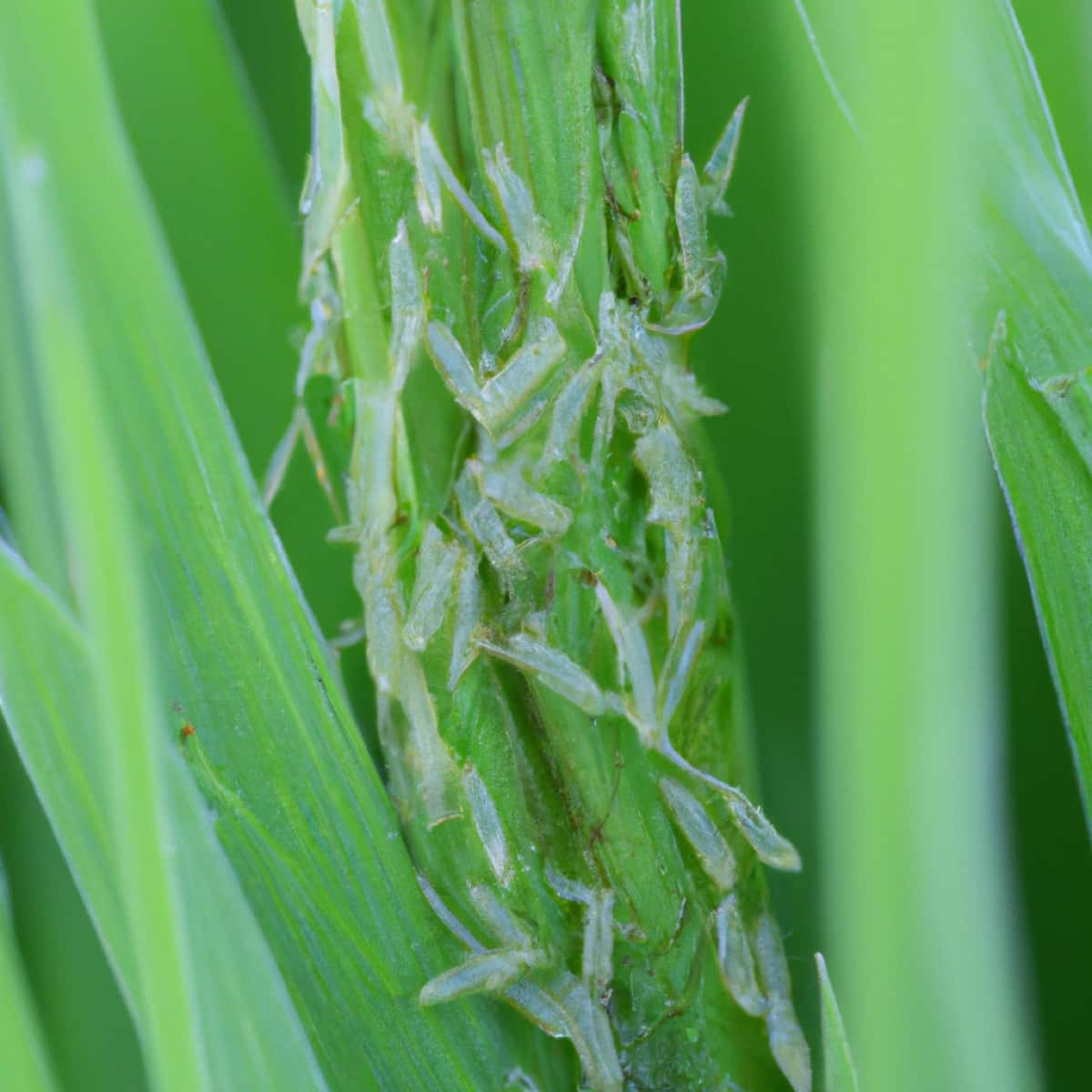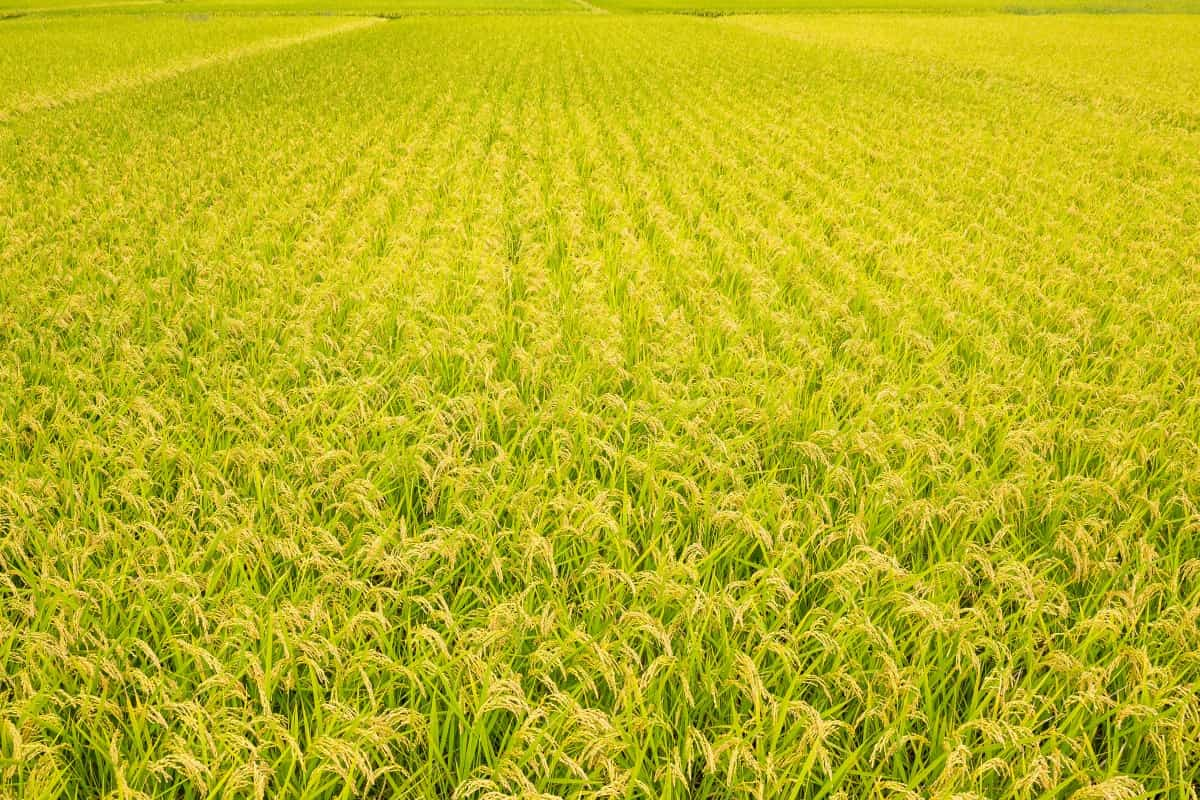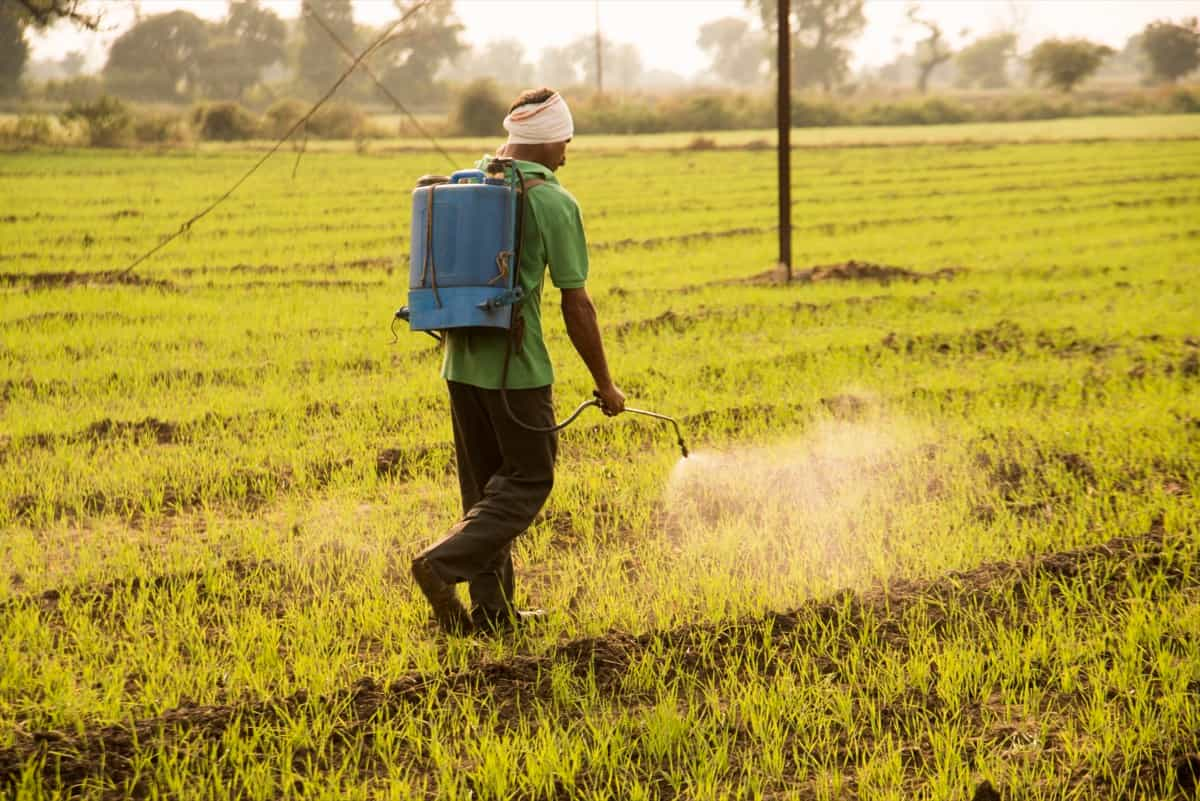Thrips are insects that belong to the order Thysanoptera and are characterized by their slender bodies and fringed wings. Stenchaetothrips biformis is the scientific name for Thrips. They cause damage to host plants by puncturing the epidermal layer and sucking out the cell contents. This results in stippling, discoloration, and silvering of the leaves. Let’s check out more information on Thrips management in Paddy farming below.

Thrips feeding is accompanied by black varnish-like flecks of frass, which is their excrement. Thrips can be a significant pest problem for Rice crops. Paddy is widely grown in Asia, Africa, and South America and is the most important staple food. The plant produces small, edible grains harvested, threshed, and polished to make rice.
Thrips management in Paddy
The life cycle of Thrips
- Thrips go through two actively feeding larval stages, two non-feeding larval stages (prepupa and pupa), and finally, maturity.
- Females lay their eggs on or in leaves, buds, and other places where larvae eat.
- Most species’ prepupae and pupae fall to the earth or leaf litter or lodge in plant fissures or galls.
- Thrips pupate openly on lower leaf surfaces. On the other hand, some gall-forming species pupate on leaf surfaces but are surrounded by deformed plant tissue.
- Thrips reproduce multiple times yearly; the complete life cycle can take as little as two weeks in warm conditions.
- Thrips have a distinct life cycle that contributes to their potential to harm crops and ornamental plants.
Factors favoring population increase of Thrips in the field
Dry and warm weather promotes population growth, while humidity inhibits it. Wind, clothes, equipment, and containers that have yet to be thoroughly cleaned after working can readily carry adults. Generally feeds on many species of thrips feed on fungal spores and pollen and are often harmful.
Identification of Thrips in the rice field
- Egg: A newly placed egg is hyaline and turns pale yellow as it matures. The egg is incredibly small, measuring 0.25 mm in length.
- Nymph: Neonates are translucent until the second molting when they turn pale yellow. Second-instar nymphs have slightly darker legs, heads, and antennae than first-instar larvae.
- Pupa: The pupa has long wing pads that extend two-thirds of the way down the abdomen. The ninth abdominal tergite similarly features four pointed processes. Brown is the color of the pre-pupa.
- Adult: The adult has a slim build. It’s dark brown and around 1-2 mm in length. It comes in two varieties: winged and wingless. The winged shape has two sets of extended narrow wings with long hair fringes.
In case you missed it: Planthopper Management in Paddy: Symptoms, Treatment, Chemical, Biological, Natural, and Organic Control

Damage symptoms of Thrips in the rice field
- Young seedling leaves have discoloration and rolling.
- Yellow (or) silvery streaks.
- Terminal leaf rolling and drying from tip to base
- It harms both the nursery and the main field.
- When extensively afflicted, leaf tips wither.
- At the panicle stage, unfilled granules
- Silvering occurs on the tops of leaf blades and petals.
- Thrips and their larvae cluster under leaves with black feces stains.
- Thrips puncturing the host tissue’s outer layer and sucking out cell contents cause the “silvering” effect.
- The upper and lower leaves show thrips and their destruction.
Percentage of yield loss or stage of attack by Thrips in Paddy field
Adults and nymphs both lacerate the delicate leaves and drink the plant sap. As a result, the leaves have thin yellowish lines or silvery streaks. Later, the leaves curl lengthwise and dry from the tip down. In extreme circumstances, the entire nursery may dry out and cease producing seedlings. In the early phases, transplanted crops can also be impacted.
ETL: Wetting one’s hand with water and passing it over the foliage in 12 spots is the ETL (Economic Threshold Level) for sampling thrips in a nursery. If the thrips population surpasses 60 in 12 passes, or if rolling of half the area of the first and second leaves is observed in 10% of seedlings, control of the thrips population is required.
Cultural control of Thrips
- For a couple of days, intermittently submerge diseased crops.
- Apply a damp towel to the saplings.
- The rice thrips can be effectively controlled culturally by flooding the infected field for two days.
- It has been determined which cultivars are resistant to rice thrips.
- Use resilient or tolerant species.
Biological control of Thrips
Anthocorid bugs, predatory thrips, coccinellid beetles, staphylinid beetles, and coccinellid bugs are examples of biological control agents that eat both nymphs and adults.
Chemical control of Thrips
- Thrips have developed resistance to many pesticide classes because of their high reproduction rates and life cycles.
- Fipronil, imidacloprid, or acetamiprid are effective contact insecticides often coupled with piperonyl butoxide to improve their efficacy.
- Spray phosphamidon for the nursery stage.
- Spray azadirachtin 0.15 at a rate of 600-1000 g/acre or thiamethoxam @ 40 g/acre
In case you missed it: Rice Gall Midge Management in Paddy: Symptoms, Treatment, Chemical, Biological, Natural, and Organic Control

Organic/natural control of Thrips
- Natural enemies (such as predatory mites and syrphid fly larvae) and bees are present. As a result, do not use spinosad on flowering plants.
- A combination of garlic extracts and pesticides is effective in the case of floral infection.
- Try using neem oil or natural pyrethrins on the undersides of the leaves.
Preventive measures for control of Thrips
- Plant-resistant varieties.
- Virus- and thrips-free transplants from certified plant nurseries are recommended.
- Plant sensitive plants away from weedy regions and alternate hosts.
- To limit the incidence and advancement of thrips, apply plastic or organic mulch along the rows.
- Fields should be checked frequently.
- For mass catching, place sticky traps across a vast region.
- Instead of shearing off terminals, prune plants just above branching points and nodes.
- Keep plants well hydrated and avoid using too much nitrogen fertilizer.
- Remove and destroy diseased plants and plant waste.
Conclusion
Managing thrips in paddy fields requires a multi-faceted approach that combines monitoring and early detection, cultural practices, chemical control, biological control, and natural and organic control measures. Chemical controls such as insecticides can effectively reduce thrips populations.
Still, it is important to rotate insecticides to reduce the risk of developing resistance. Biological controls, such as predatory mites and beneficial insects, can help reduce thrips populations and maintain a balanced ecosystem. Additionally, cultural practices such as crop rotation, proper irrigation, and proper nutrient management can also help reduce thrip populations and prevent damage to the paddy crop.
- Beneficial Insects in Pest Management
- Natural Solutions for Pest Control in Flower Gardens
- Types of Fungicides Used in Agriculture
- Common Issues in the Fruit Development Stage of Pomegranate Farming
- Fruit Development Issues in Papaya: Easy Solutions and Treatment
- Soil-Borne Diseases and How to Protect Your Plants
- Practices to Prevent Disease Spread in the Garden
- From Wilted to Thriving: How to Treat Root Rot Naturally in Houseplants
- Natural Remedies to Cure Brown Spots on Fig Tree Leaves
- Natural Solutions for Poinsettia Problems: 100% Effective Remedies
- How to Control Calla Lily Problems: Natural Remedies for Leaf and Flower Problems
- How to Fix Morning Glory Problems: Natural Remedies for Leaf and Flower Issues
- Natural Remedies for Tulsi Plant Problems: 100% Effective Solutions for Home Gardeners
- Natural Pesticides for Zinnias: 100% Effective to Kill Bugs on Zinnia Plants
- How to Fix Daisy Leaf and Flower Problems: Exploring Causes and Natural and Home Remedies
- Natural Ways to Fix Common Agave Plant Problems: Exploring Causes and Solutions
- Natural Ways to Fix Common Bamboo Plant Problems: Exploring Causes and Solutions
- Natural Ways to Fix Common Spider Plant Problems: Exploring Causes and Solution
- Natural Ways to Fix Common Snake Plant Problems: Exploring Causes to Solution
- How to Get Rid of Fireworms in Gardens: 100% Effective Control Strategies
- How to Get Rid of Kudzu Bug In Garden: A Comprehensive Guide to Control and Treatment
- Reviving Yellowing Meyer Lemon Leaves: Causes and Solutions
- How to Get Rid of Twig Girdlers: 100% Effective Control Strategies
- Ultimate Guide to Managing Peacock Plant Pests and Diseases: Prevention and Treatment
- How to Get Rid of Crane Flies in Lawns: 100% Effective Control Strategies
- Identifying and Managing Sudden Death Syndrome in Soybeans
- How to Get Rid of Billbugs in Lawns: 100% Effective Control Strategies
- How to Manage Red Crown Rot in Soybean: Control and Prevention Strategies
- Soybean Yield Boost: Tackling Soybean Cyst Nematode with Expert Strategies
- Turning Over a New Leaf: Fixing Yellowing Leaves on Peach Trees
- Management of Philodendron Pests and Diseases: Effective Strategies for Control, Treatment and Prevention
- Maximizing Agricultural Yields: Effective Strategies for Ragweed Management
- Systemic Insecticides for Aphid Control: A Comprehensive Guide
- How to Get Rid of Armored Scale Insects: Remedies and Treatment
- How to Get Rid of Apple Snail Eggs in the Garden: Treatment and Remedies
- Ultimate Guide for Applying Acaricide Insecticides for Tick Control